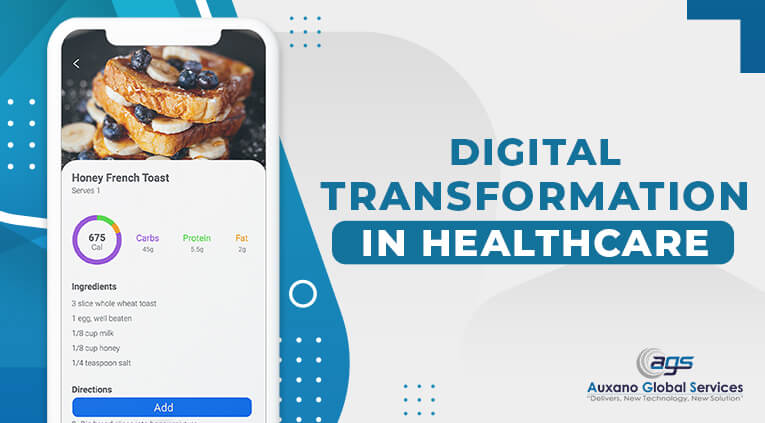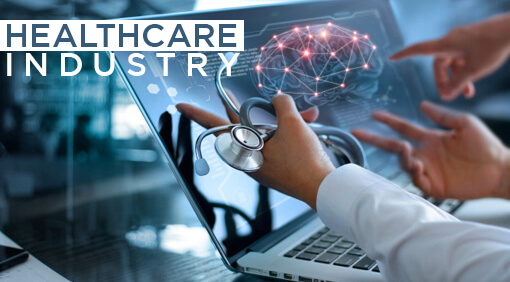The need for convenient and accessible healthcare is growing, and telemedicine and telehealth are emerging as viable solutions. For those who are unable to access the traditional medical care due to distance or other factors, these services can provide the necessary support to stay healthy.
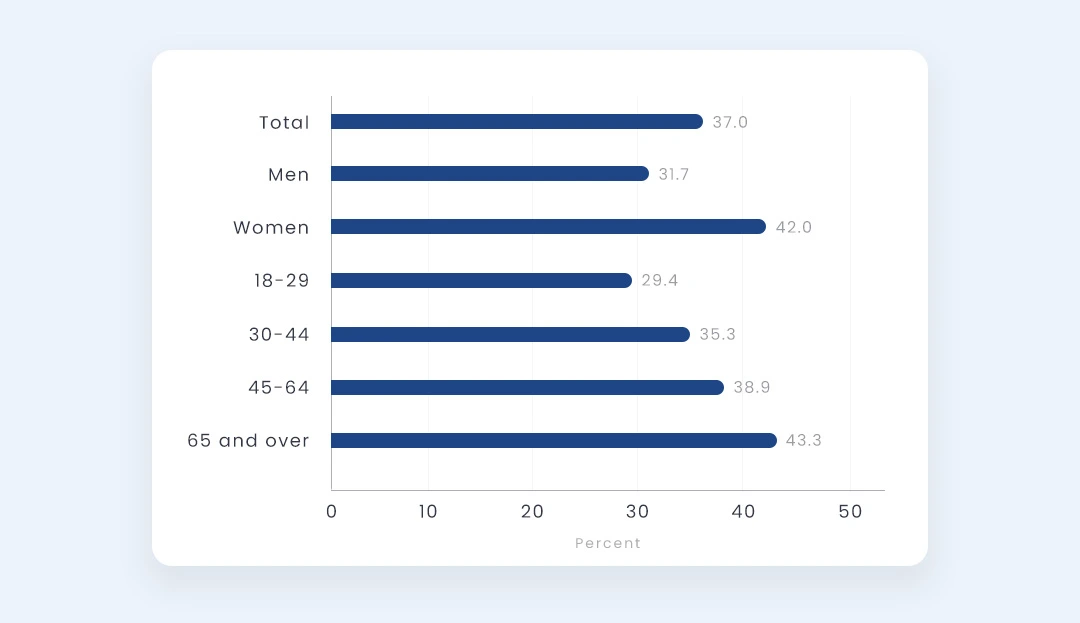
According to reports, around 37% of adults actively used telemedicine and telehealth services in 2021. Moreover, 69% of people commonly reported illness, and about 66% reported active follow-up visits through telehealth services.
Telemedicine for healthcare ecosystems involves using video conferencing, messaging apps, and remote monitoring devices to allow medical professionals to diagnose, treat, monitor, and educate patients from any location.
This approach offers many advantages over traditional in-person healthcare visits, including convenience for both parties involved and cost savings for both patients’ families and healthcare providers. Despite these benefits, there are still some challenges that must be addressed before this approach can reach its full potential.
This article will explore some of the current approaches to telemedicine and telehealth, as well as the main challenges currently hindering its widespread adoption.
What Exactly Is Telemedicine?
Telemedicine is the use of digital health technology to provide healthcare services remotely. This includes the use of a variety of technologies, such as video conferencing, messaging apps, and remote monitoring devices, to allow medical professionals to diagnose, treat, monitor, and educate patients from any location.
Using a custom telemedicine solution, healthcare providers can provide virtual consultations, track patient information and health data, store records electronically, and communicate with other medical professionals.
In turn, this creates a platform for efficient and cost-effective healthcare delivery to those who need it. The goal is to enable doctors to provide the same high-quality care regardless of their patient’s location.
What Exactly Is Telehealth?
Telehealth is not a new concept, but advances in technology have enabled its widespread implementation. Telehealth is an umbrella term that encompasses various remote healthcare services using digital communication technologies.
It includes various services such as consultations, diagnosis, medication management, health coaching and education, lifestyle management, and remote monitoring. These services can be provided remotely using various digital communication technologies, including video conferencing, messaging apps, and remote monitoring devices.
Unlike telemedicine which is primarily used for clinical services, telehealth also includes nonclinical services such as training staff, information distribution, hospital management conferences, and more. On this note, let’s look at some future-focused telemedicine and telehealth approaches in the healthcare industry.
Healthcare Areas Where Telemedicine And Telehealth Approach Brings Transformation
There are various ways that telemedicine and telehealth can be used to improve healthcare delivery and bring digital transformation in healthcare spaces. However, there are five major areas where this approach is having a transformative effect.
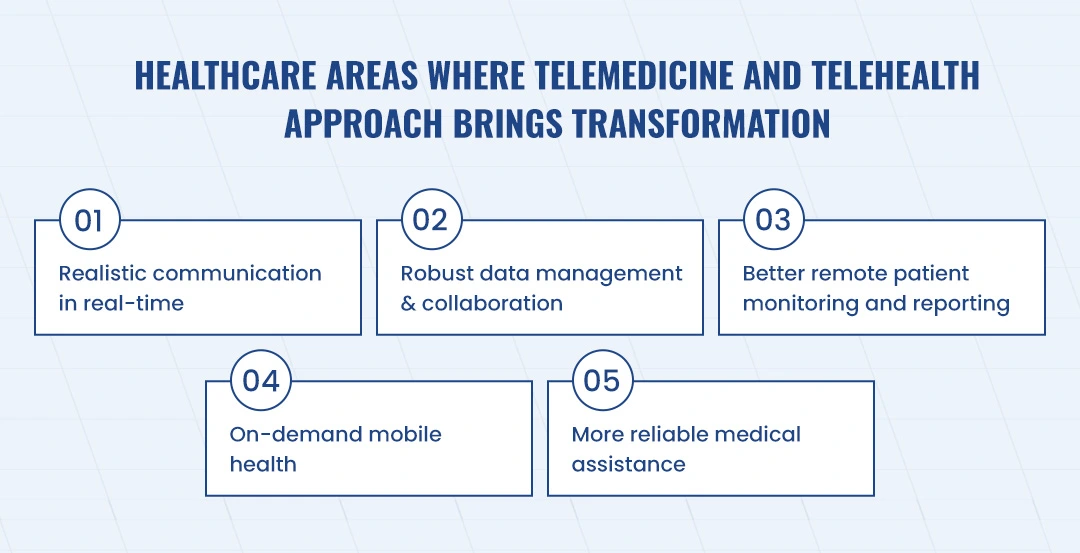
Realistic Communication In Real-Time
Real-time communication between healthcare providers and patients can be achieved through video conferencing, allowing for more accurate diagnoses to be made. It can be especially beneficial for those living in rural areas or developing countries with limited access to specialized medical care.
Leveraging a telemedicine software platform, healthcare providers can schedule video conferences with their patients and discuss symptoms and possible diagnoses in real-time. This approach to care also helps reduce the burden on healthcare systems as it eliminates the need for physical visits in many cases.
Post-COVID, there is a constant rally of limited resources, and telemedicine provides an opportunity to make healthcare more efficient. In addition, it also allows for better coordination and communication between healthcare providers in different locations, allowing them to share data and collaborate on patient care.
Robust Data Management And Collaboration
Telemedicine and telehealth technologies facilitate easy access to patient data, which can be securely shared among healthcare providers. This helps increase collaboration between practitioners, allowing them to work together to provide the best care possible.
Data sharing also enables better coordination of care, improved monitoring of treatment progress, and more accurate diagnoses. Telemedicine and telehealth also help healthcare providers access a more comprehensive range of data, allowing them to diagnose more accurately and provide the best possible care.
With compliances like HIPAA and GDPR, it is essential to ensure data security and privacy while using telemedicine. However, with a constant adaptation of secure cloud technologies, data security and privacy can be well maintained.
Better Remote Patient Monitoring And Reporting
Using telemedicine for healthcare ecosystems, healthcare providers can monitor and track the health of their patients remotely. This includes tracking vital signs, activity levels, medication management, and other metrics in real time. In addition, doctors and healthcare specialists can collaborate over long distances to create personalized patient care plans.
Remote patient monitoring also helps healthcare providers identify health risks and intervene early, thus reducing the risk of complications and readmissions. For example, telemedicine technologies can monitor chronic conditions in real-time and provide a better understanding of how they impact an individual’s health.
For monitoring patients’ health and conducting remote consultations, telemedicine platforms offer great tools. These tools enable healthcare providers to access vital latest updated information such as blood pressure, heart rate, temperature, and more.
On-demand Mobile Health
Telemedicine has enabled healthcare providers to offer on-demand mobile health services through custom healthcare mobile apps. This includes access to medical advice, help with symptom tracking and management, remote prescription refills, and more.
Using mobile devices such as smartphones and tablets, patients can now access healthcare services anytime and anywhere. Furthermore, telemedicine platforms also allow healthcare providers to offer on-demand appointments and consultations.
By leveraging telemedicine technologies, healthcare providers can provide more timely care for their patients and better coordinate the delivery of health services. This helps reduce long wait times for patient appointments, thus improving overall access to care.
More Reliable Medical Assistance
Telemedicine and telehealth technologies can help healthcare providers offer better medical assistance to their patients. By allowing them to access patient records and medical history remotely, healthcare providers can make more informed decisions about patient care.
For example, telemedicine technologies can provide remote second opinions from specialists and medical experts. This helps ensure better patient outcomes as healthcare providers can access the best available advice and care options.
It’s not a fact that the implementation of telehealth software services will streamline the entire healthcare sector. However, there are certain challenges that need to be addressed for telemedicine to reach its full potential. Let’s look at some key challenges that are still present in telemedicine today.
Complex Challenges Of Telehealth And Telemedicine Advancements
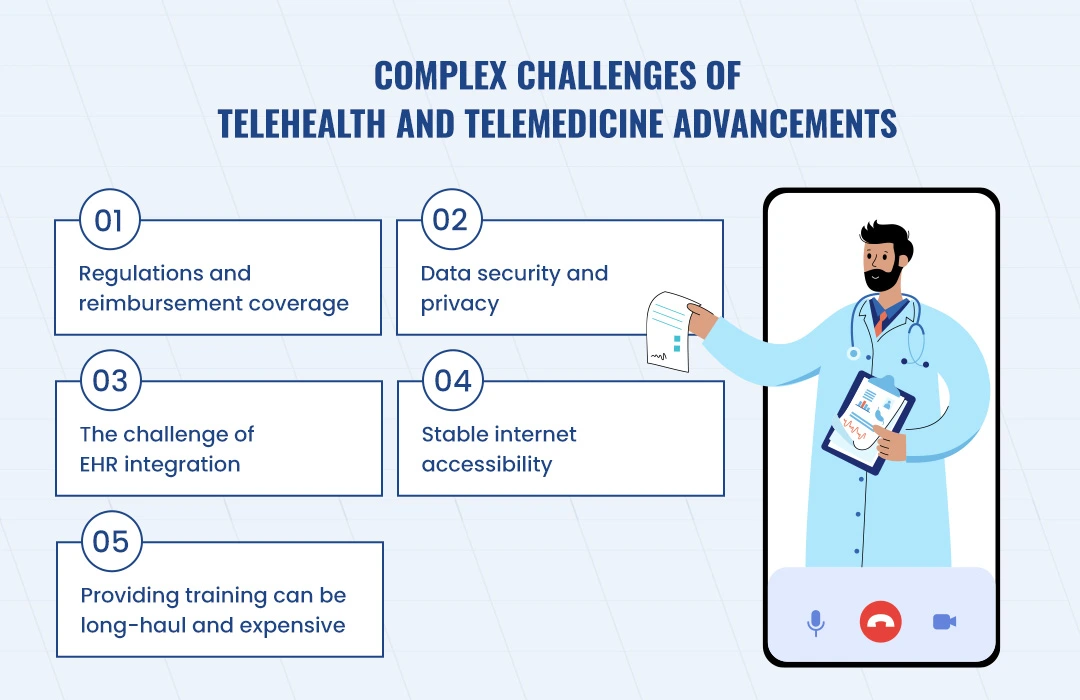
Regulations And Reimbursement Coverage
In the US and several other countries, the concept of telehealth from a government’s perspective is still in its infancy. Regulations and reimbursement coverage for telemedicine services are often complex and can vary from state to state.
There are quite complex and harsh regulatory and reimbursement frameworks that need to be followed. This has led to a bottleneck for telemedicine clients and providers alike, leading to delays in adoption.
The reimbursement challenges involve identifying, creating, and implementing billing codes that adequately reflect the type of telemedicine services provided. As the pay scale, cycle, and procedures for telemedicine are still being refined, it is essential for healthcare providers to stay updated on these changes.
There is a dire need for more robust and widely-adopted laws to streamline the reimbursement process and make it easier for telemedicine providers to offer their services.
The government sometimes relaxes some rules, and on the other hand, there are also sometimes when it becomes scrupulous. This, in turn, affects the reimbursement process for telemedicine services and makes it difficult for healthcare providers to take advantage of these technologies.
Data Security And Privacy
With every passing year, companies are actively searching for healthcare software developers for hire to ensure that telemedicine software solutions are secure and reliable. But, as the number of healthcare-related businesses increases, the risk of data privacy breaches and security threats also grows.
The healthcare data interoperability and transferability standards have yet to be fully established and are streamlined worldwide. This can make it difficult for healthcare providers to access patient information from different countries securely.
For example, in Europe, the GDPR (General Data Protection Regulation) has put additional security and privacy procedures in place that need to be followed by healthcare organizations. Healthcare providers must ensure that their telemedicine software is compliant with the latest data privacy standards and regulations.
On the other hand, talking about the USA, especially in California, the CCPA (California Consumer Privacy Act) is applicable to businesses and healthcare providers operating in the state. The parameters of this act are different from those in the GDPR.
The Challenge Of EHR Integration
For telemedicine to be successful, it is essential that healthcare providers integrate their existing electronic health records (EHR) systems with the telemedicine platform. This helps to ensure that medical data can be securely shared between remote healthcare providers and patients.
The problem is that EHR systems are both expensive and complicated. Integrating the telemedicine platform with existing EHRs is often a long and tedious process that requires extensive technical expertise. This requires healthcare providers to spend more time, resources, and money than was initially expected.
In addition to this, EHRs are often incompatible with each other and do not always work with the telemedicine platform. This can further complicate the process of integrating EHRs with the telemedicine platform.
Many hospitals worldwide are using legacy systems that are outdated and lack the necessary technical capabilities for integration with a telemedicine platform. This can add a further barrier to the process of integrating a telemedicine platform with existing systems.
Stable Internet Accessibility
The issue of constant access to the internet might sound like a minor problem, but it is one of the major barriers to adopting telemedicine technology. The main challenge here is that not all patients and even healthcare providers have access to a reliable and stable internet connection.
This can be especially problematic for rural areas, where the availability and quality of internet connections often need to be improved. In addition to this, there are many countries where internet censorship and poor infrastructure can limit the access of patients and healthcare providers to telemedicine services.
The lack of reliable internet access can also make it difficult for patients to access their medical records, as well as the telemedicine platform itself. This can seriously limit the effectiveness of telemedicine in providing healthcare services to patients.
Providing Training Can Be Long-Haul And Expensive
While there are many advantages of telemedicine, one of the significant challenges that healthcare providers face is the training involved in using telemedicine technology. This can be especially difficult for health organizations that need more resources to provide adequate training to their staff.
Providing training on how to use a telemedicine platform can be a long and tedious process, requiring extensive resources from the healthcare organization. It is also important to note that training materials need to be updated in order to keep up with the ever-changing technology. This can add extra costs for healthcare organizations that are already operating on tight budgets.
For elderly patients, the use of telemedicine can be particularly challenging as they often have limited knowledge about technology and its applications. This can make it difficult for healthcare providers to train them on how to use a telemedicine platform.
All these challenges, when taken together, can be very daunting for healthcare providers who are looking to adopt telemedicine technology. Despite these challenges, the potential benefits of telemedicine make it a promising technology for the future of healthcare. On this note, let’s look at how to get started with the implementation and take the first step toward it.
How To Adopt Telemedicine Implementation?
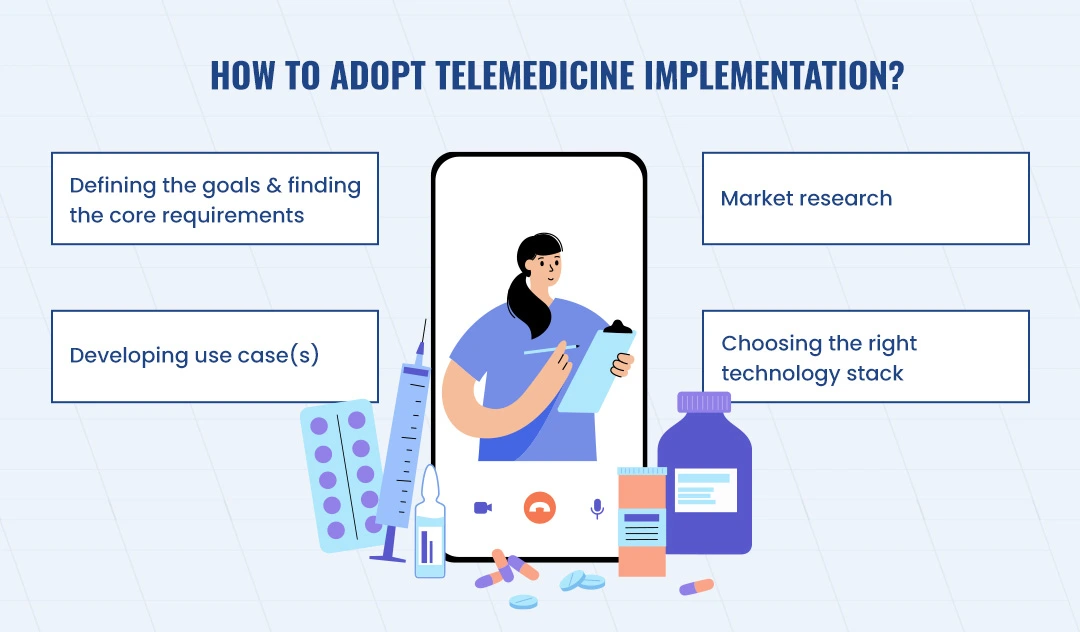
Below are some actionable steps from an individual healthcare chain that is possible to take and adopt telemedicine successfully:
Defining The Goals And Finding The Core Requirements
The first step for any healthcare organization looking to implement a telemedicine platform should be to identify its goals and the core requirements of its service. This will help the organization determine what type of platform they need and how it should be integrated with existing systems.
It is also important to note that the goals and requirements of a telemedicine platform should be tailored to the specific needs of each healthcare organization. Moreover, it is crucial to consider the potential legal and regulatory implications of any proposed telemedicine platform.
Market Research
Once the goals and requirements have been identified, the next step is to do some market research to find out the market trends, demand for telemedicine services, and the technology that best suits those needs.
Market research should be done based on the specific needs of the healthcare organization. This will help in identifying the best platforms, features, and services that can be used to provide telemedicine services.
Developing Use Case(s)
It is important for healthcare organizations to develop a use case to help them determine how the platform will be used. This should include the types of services that will be provided, who will be using the platform, and what type of data will need to be shared.
This will help the healthcare organization identify any potential risks associated with the platform, as well as what types of security measures need to be put in place.
Choosing The Right Technology Stack
The choice of the right technology stack is a critical step in the successful implementation of any telemedicine platform. Healthcare organizations should consider the scalability, reliability, and security of the platform when making their decision.
In addition, they should also consider the compatibility of the platform with existing systems, such as Electronic Health Records (EHR) and other related applications. Moreover, as there are multiple telemedicine platforms available, healthcare organizations should also evaluate the features that each platform offers as a reference to build a custom solution.
To streamline the process of developing a telemedicine or telehealth solution, it’s better to hire a professional company like Auxano Global Services.
It’s because they have extensive experience in developing customized solutions for healthcare organizations of all sizes. Moreover, they also provide post-implementation support to ensure that the platform is running properly and efficiently.
Why Hire Auxano Global Services For Telehealth Solution Development?
Auxano Global Services is a leading telehealth software development company that specializes in customizing healthcare solutions to meet the specific needs of our clients. With years of experience in developing applications for healthcare providers, we are able to create a secure, reliable, and scalable telemedicine or telehealth platform for our clients.

Our team of experienced software engineers, designers, and architects is dedicated to providing our clients with the best product possible. We also assist our clients every step of the way, from strategy and planning to development, deployment, and maintenance.
In addition, we provide post-implementation support so that our clients can ensure their platform is running properly and efficiently. Our team is available 24/7 to answer any questions or address any issues that our clients may have with their telemedicine or telehealth platform.
Wrapping Up!
Telemedicine and telehealth are becoming increasingly important in today’s healthcare industry. When developing a telemedicine solution, it’s essential to consider the legal and regulatory implications, do market research, create use cases, choose the right technology stack, and hire a professional software development company like Auxano Global Services to ensure the successful implementation of your platform.
Frequently Asked Questions
-
1. Why Does Your Organization Need A Telemedicine Platform?
Telemedicine allows healthcare providers to provide care and services remotely without the need for in-person visits. This can help reduce costs, increase efficiency, and improve patient outcomes.
-
2. What Are The Challenges Associated With Developing A Telemedicine Platform?
Developing a telemedicine platform can be challenging due to the complexity of the technology and the need to ensure security and privacy. Moreover, there are also legal and regulatory implications that need to be considered when developing a telemedicine platform.
-
3. How Much Does It Cost To Develop A Telemedicine Platform?
The cost of developing a telemedicine platform varies depending on the complexity of the project and the features required. It’s best first to gather requirements and consult a professional software development company to get an accurate estimate of the cost.
-
4. Who Should Adopt Telemedicine?
Any healthcare organization or provider can benefit from telemedicine, as it allows them to provide care and services remotely. In addition, telemedicine can help reduce costs and improve patient outcomes.
-
5. What Is The Future Of Telemedicine?
The future of telemedicine looks very promising. With advancements in technology, such as artificial intelligence and the use of wearables, telemedicine will continue to grow and become more widely accepted in the years to come.



